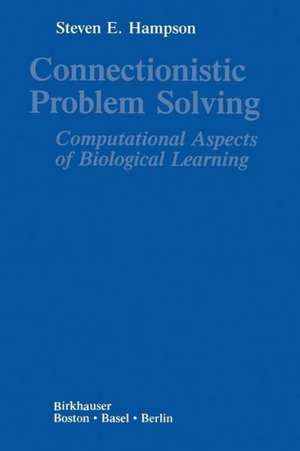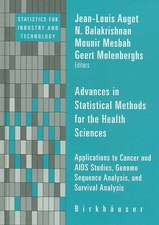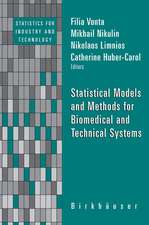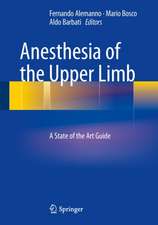Connectionistic Problem Solving: Computational Aspects of Biological Learning
Autor HAMPSONen Limba Engleză Paperback – 1990
Preț: 332.06 lei
Preț vechi: 415.08 lei
-20% Nou
Puncte Express: 498
Preț estimativ în valută:
63.55€ • 69.00$ • 53.38£
63.55€ • 69.00$ • 53.38£
Carte tipărită la comandă
Livrare economică 22 aprilie-06 mai
Preluare comenzi: 021 569.72.76
Specificații
ISBN-13: 9780817634506
ISBN-10: 0817634509
Pagini: 278
Ilustrații: X, 278 p.
Dimensiuni: 155 x 235 x 15 mm
Greutate: 0.41 kg
Ediția:Softcover reprint of the original 1st ed. 1990
Editura: Birkhäuser Boston
Colecția Birkhäuser
Locul publicării:Boston, MA, United States
ISBN-10: 0817634509
Pagini: 278
Ilustrații: X, 278 p.
Dimensiuni: 155 x 235 x 15 mm
Greutate: 0.41 kg
Ediția:Softcover reprint of the original 1st ed. 1990
Editura: Birkhäuser Boston
Colecția Birkhäuser
Locul publicării:Boston, MA, United States
Public țintă
ResearchCuprins
1 Introduction.- 1.1 The problem and the approach.- 1.2 Adaptive problem solving.- 1.3 Starting with simple models.- 1.4 Sequential vs. parallel processing.- 1.5 Learning.- 1.6 Overview of the model.- 2 Node Structure and Training.- 2.1 Introduction.- 2.2 Node structure.- 2.3 Node training.- 2.4 Input order.- 2.5 Alternative LTU models.- 2.6 Continuous or multivalued valued features.- 2.7 Representing multivalued features.- 2.8 Excitation, inhibition and facilitation.- 3 Improving on Perceptron Training.- 3.1 Introduction.- 3.2 Perceptron training time complexity.- 3.3 Output-specific feature associability.- 3.4 Origin placement.- 3.5 Short-term weight modification.- 4 Learning and Using Specific Instances.- 4.1 Introduction.- 4.2 Focusing.- 4.3 Generalization vs. specific instance learning.- 4.4 Use of specific instances.- 5 Operator and Network Structure.- 5.1 Introduction.- 5.2 Network interconnections and association types.- 5.3 Multilayer networks.- 5.4 Recurrent connections.- 5.5 Forms of category representation.- 5.6 Space requirements.- 5.7 Goals as undistinguished features.- 6 Operator Training.- 6.1 Introduction.- 6.2 Operator training (disjunctive representation).- 6.3 OT extensions.- 6.4 OT results.- 6.5 Shared memory focusing.- 6.6 Behavioral results.- 6.7 Input-specific feature associability.- 7 Learned Evaluation and Sequential Credit Assignment.- 7.1 Introduction.- 7.2 Single action.- 7.3 Sequential action.- 7.4 Biological evaluation.- 7.5 The S-R model.- 7.6 Variations on the theme.- 7.7 Instrumental and classical conditioning.- 7.8 Results.- 8 Stimulus-Stimulus Associations and Parallel Search.- 8.1 Introduction.- 8.2 The S-S model.- 8.3 Backward search.- 8.4 Eco-world: an example domain.- 8.5 Forward search.- 9 Stimulus-Stimulus Discussion.- 9.1 Introduction.- 9.2 Biological relevance.- 9.3 A simple experiment.- 9.4 Drive and reward.- 9.5 Automatization of behavior.- 9.6 Parallel vs. sequential search.- 10 Stimulus-Goal Associations.- 10.1 Introduction.- 10.2 The S-G model.- 10.3 S-G discussion.- 10.4 General goal setting.- 11 Summary and Conclusions.- 12 Further Reading and Notes.- 13 Bibliography.- 14 Symbols and Abbreviations.- 15 Name Index.- 16 Subject Index.








